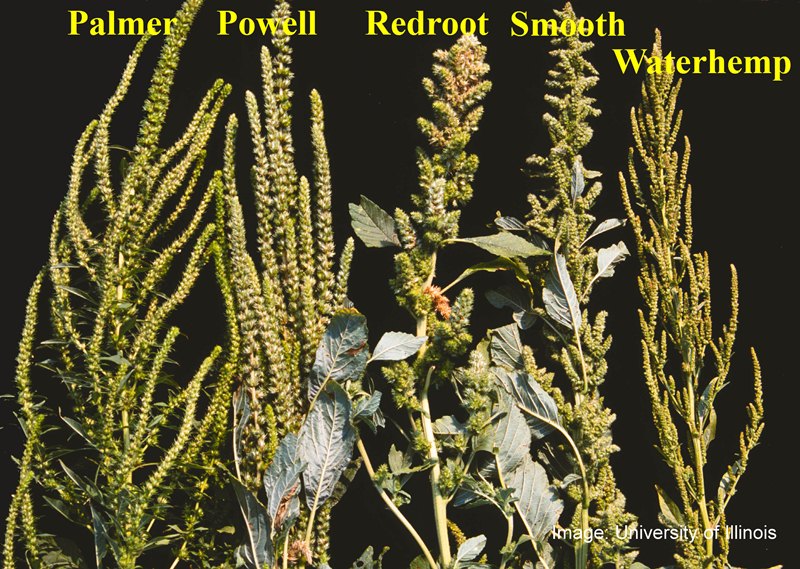 |
| Figure. Compare and contrast reproductive structures produced by different pigweed species. Image courtesy of University of Illinois Extension. |
While not everyone in northwest Minnesota has had the 'joy' of trying to manage waterhemp in broad leaved crop fields just yet, those that have can attest to the difficulty of trying to stay on top of a weed that can emerge long after both pre- and post-emergence herbicides have broken down. Palmer amaranth is in the same family of weeds as waterhemp but as it is not native to Minnesota, has the capacity to produce large quantities of seed and a fast rate of growth is considered a noxious and invasive weed that is prohibited in Minnesota and must be eradicated.
Minnesota Department of Agriculture (MDA) has a team of folks dedicated to helping farmers to eradicate and monitor Palmer infestations.
As folks in northwest Minnesota finish up small grains harvest and sugarbeet pre-pile and then gear up for soybeans, there is bound to be some down time due to rain. This time would be a perfect excuse to spend on MDA's webpages dedicated to to Palmer amaranth and focusing on Palmer amaranth in Minnesota. The next time you are able to get back into your tractor or combine cab and get a bird's eye view of your fields the information and pictures found on these websites can help you to identify potential Palmer amaranth infestations. Knowing about an infestation can help you to avoid spreading the infestation within and among fields by running seed through your machinery.